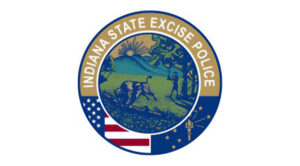Byline: Josh Lewis, CTO at SOMA Global
Glendale saw a massive influx of sports fans this past weekend for Super Bowl LVII. For football fans, the Super Bowl is a time for fun and food as they watch the highest-stakes game of the year. But NHTSA fatality data showed that the stakes are higher in another way. Alcohol-related traffic fatalities were 74% higher on Super Bowl Sunday compared to the week before and 82% higher than the following week.

Public-safety organizations work tirelessly to protect lives not just from drunk driving but also from fires, cardiac events, and other emergencies, but as the Super Bowl statistics point out, doing so involves rapid swings in the kinds of problems faced. How then can public-safety workers adapt to such dynamic circumstances? I believe that dispatchers and first responders will need to embrace new hardware and software technologies to stay ahead of emerging public-safety challenges.
Faster communication hardware for better collaboration
Newer communications hardware offers the possibility of better real-time connectivity for first responders. We’ve become accustomed to fast data connections in daily life, and we should leverage that same technology for public safety. For example, adopting 5G radio technologywill enable monitoring sensitive areas with IoT sensors and transmitting high-resolution video from first responders, which could help them work together more effectively in emergent situations.
Cloud computing and updated software for greater insights
While advanced communications hardware can help first responders coordinate better, public safety can also benefit from cloud computing and the right software. As our founder Peter Quintas pointed out, cloud computing can have significant benefits by making up-to-date information more accessible and paperwork less obtrusive. These benefits should translate into fewer mistakes.
Many public safety systems are outdated, and upgrading that software can yield benefits to help departments catch trends and incidents that otherwise may have been missed. Predictive analysis could greatly benefit public safety by placing first responders where a crime or disaster is likely to occur, cutting response times dramatically.
In fact, even a small improvement in response times can be important. With cardiac events and strokes, shortening ambulance response times by just two minutes can reduce deaths by over 40 percent.
The need for “it just works”
Technological improvements, however, should not be added simply because they are new. More public-safety research from NIST published early this year emphasized the need for a balanced approach to tech. People’s lives depend on how first responders and dispatchers act, so we need to be careful that new technologies aid rather than hinder them.
The needs and risk tolerances of public-safety organizations are much more stringent than those of the general public, and our approach to technology needs to reflect these priorities. With that in mind, I have four questions to ask when considering new technologies:
- Does the new tech significantly improve public safety either directly or indirectly? If it does, then it’s likely worth considering, depending on the other factors.
- Has the IT been tested and hardened for use in emergency situations? In an emergency, first responders can’t afford to have a tool not work because it needs to be rebooted or updated. The tech needs to work as intended every time.
- Does it operate within clear and umimpeachable legal and ethical guidelines? First responders should be focusing on saving lives and helping people, not on whether they could get sued or prosecuted.
- How much does it cost? Keep your priorities straight. Sometimes that means waiting until the tech has come down in price.
Ideally, on Super Bowl Sunday, fans will watch the game, have fun, cheer loudly, and return home safely. It’s exciting that we have current and emerging technology that really can help first responders do their jobs better because for them, every day is a high-stakes day




